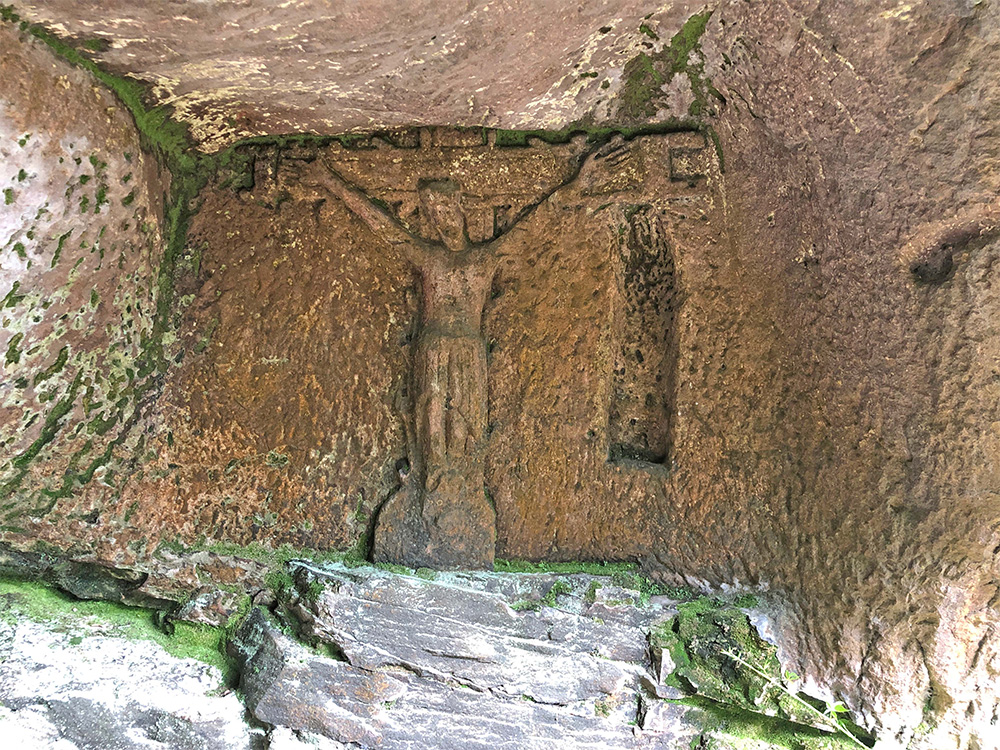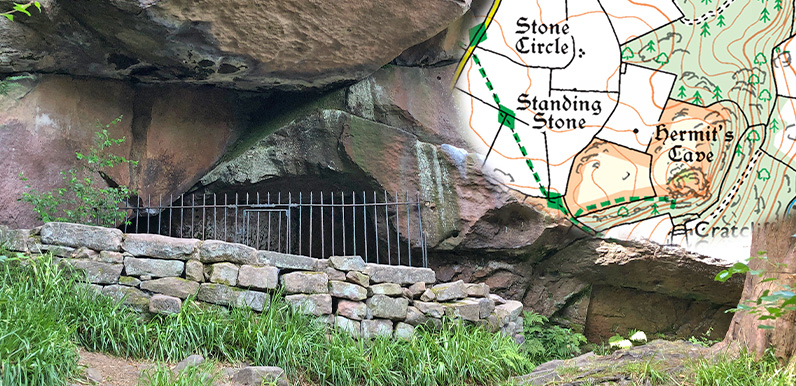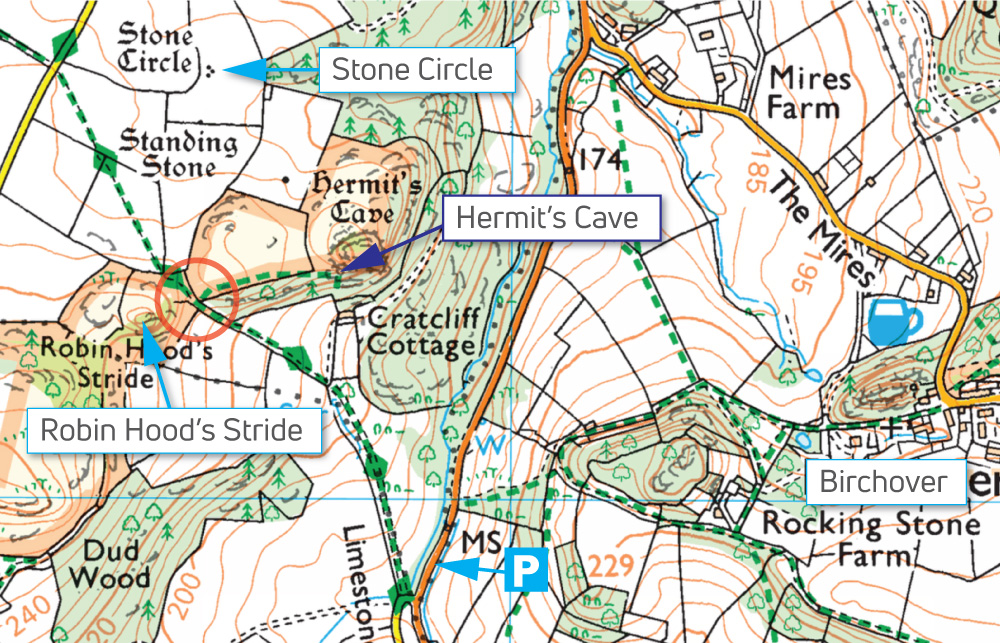Above: The crucifixion carving was vandalised in the past and is now protected by iron railings.
Also known as Cratcliff Hermitage, the hermit’s cave lies close to both Robin Hood’s Stride and the Grey Ladies Stone Circle, and is within walking distance of the Bakewell end of the Monsal Trail. (See Robin Hood’s Stride walk).
There are no signs pointing the way, so it can take a few wrong turns along the various winding paths between the rocks of Cratcliff Woods before you discover it.
Point 19 of the walk directions describes the route from the north, past the stone circle. You can also approach it from the south. The closest point, if you’re driving, is a small layby marked on the map below (See Google directions), or from Birchover where it’s usually easy to find on-street parking.
Above: The red circle shows the best starting point to discover the Hermit’s Cave (click to enlarge).

Above: Experts have dated the style of the carving to the late 14th century.
The crucifixion stands some four feet high, with a niche to the right which may have held a candle, or perhaps a statuette of the Virgin Mary, or a favourite saint.
Jesus’s face, as well as his legs and the base, have been vandalised – perhaps many centuries ago when it was a fairly common practice during the Reformation in the early 1500s. But it’s in remarkably good condition for its possible age.
It’s thought that a ledge to the left would have been the hermit’s bed. And that a rainwater groove and slots in the rock may have been part of a roof structure to extend the cave.
The cave was used as a shelter by climbers as late as the 1980s, which made the carving vulnerable to further damage. So it’s not surprising that it’s now protected with iron railings.
Payment to ‘Ye harmytt’
According to an informative page on Derbyshire Heritage’s website:
Who the hermit was is not known but a record survives in the kitchen notes of Haddon Hall to show a possible resident in 1549 when a payment was made, on 23 December, to ‘Ye harmytt’ for supplying ten rabbits. It is also noted that ‘Ye Cratcliffe Hermitte was paid fourpence for guidance of people to Haddon’.
The website also explains that the cave lay close to an important ancient trackway:
Excavations in the area show they also valued Cratcliffe Hermitage proximity to the old Portway and that this highway was busy in Roman times.
In 1845 Bateman* recorded in his Vestiges that he had found Romano-British pottery in the rock shelters around Robin Hood’s Stride, and a coin of the Emperor Tetricus near Cratcliffe Hermitage.
Many Roman coins have been found since, as well as further pottery sherds of the red, black or grey amphora type, jet buttons, pieces of lead and wires of bronze.
*Thomas Bateman was a Victorian amateur archaeologist who excavated a large number of historic sites in the Peak District. He’s been blamed for destroying a vast amount of invaluable historical information.


